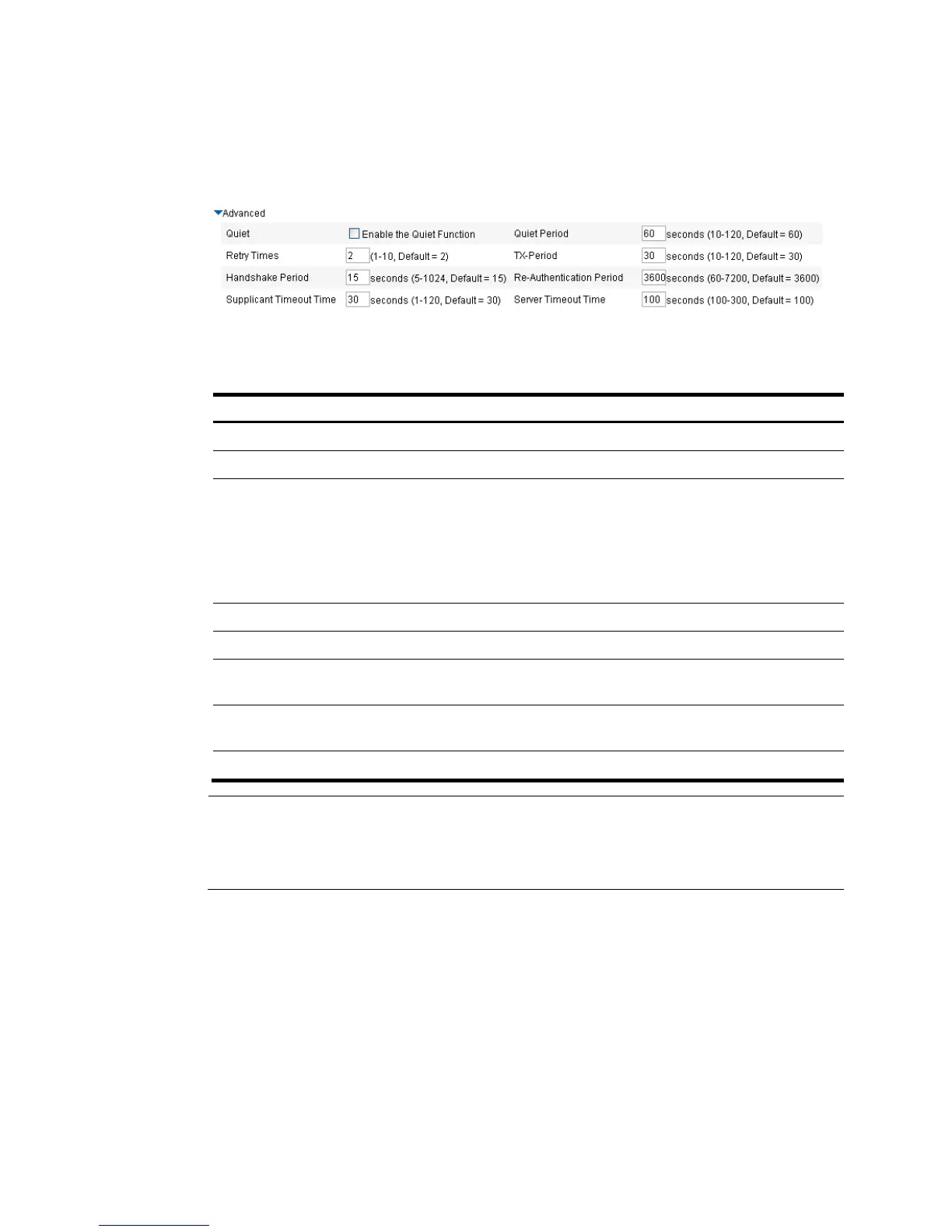333
{ The support of the RADIUS server for EAP packets.
{ The authentication methods supported by the 802.1X client and the RADIUS server.
4. Click Advanced to expand the advanced 802.1X configuration area.
Figure 309 Configuring advanced 802.1X parameters
5. Configure advanced 802.1X settings as described in Table 104, and then click Apply.
Table 104 Configuration items
Item Descri
Quiet Sets whether to enable the quiet timer.
Quiet Period Sets the value of the quiet timer.
Retry Times
Sets the maximum number of authentication request attempts.
The network access device retransmits an authentication request if it does not
receive a response to the request it has sent to the client within a period of time (set
by the TX Period
or the Supplicant Timeout Time
value). The network access
device stops retransmitting the request, if it has made the maximum number of
request transmission attempts but still received no response.
TX-Period Sets the username request timeout timer.
Handshake Period Sets the handshake timer.
Re-Authentication
Period
Sets the periodic online user re-authentication timer.
Supplicant Timeout
Time
Sets the client timeout timer.
Server Timeout Time Sets the server timeout timer.
NOTE:
You can set the client timeout timer to a high value in a low-performance network, and adjust the
server timeout timer to adapt to the performance of different authentication servers. In most cases, the
default settings are sufficient.
Configuring 802.1X on a port
1. From the navigation tree, select Authentication > 802.1X.
2. In the Ports With 802.1X Enabled area, click Add.
3. Configure 802.1X features on a port as shown in Figure 310, and then c
lick Apply.

